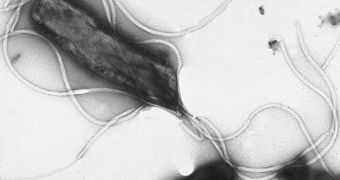It is widely accepted that the Universe exploded into existence some 13.7 billion years ago, when the Big Bang created the first light and the first amounts of matter, which then immediately started expanding. Over millions of years, galaxies and black holes began to differentiate, and, after the reionization stage ended, some one billion years after the Cosmos appeared, their evolution continues relatively undisturbed. Therefore, some astrobiologists believe, about 700 million years after the epoch completed, conditions for the emergence of basic life may have been met on countless planets.
The new research, conducted by University of San Francisco expert Aparna Venkatesan, and Lynn Rothschild, from NASA's Ames Research Center, in Moffett Field, California, featured a number of computer models, whose goal was to determine approximately when in the 13.7-billion-year history of the Universe the conditions for the formation of life were met. They analyze the history of biogenic compounds, without which life is impossible, at least to our knowledge. The appearance of these elements is not enough for life to form, as they have to reach certain concentrations for that.
Researchers know that life on our planet appeared some 3.5 billion years ago, a good billion years after the solar system and the planets were formed. By analyzing their models of star appearance and destruction, the two scientists wanted to learn what result they got for life in the entire Universe. “Can you blast that open? Could you really start really talking about life in the universe at 12 billion years? And that's the question that we're talking about,” Rothschild said, quoted by Space.
“The number one element is carbon. And you come up with that because they're really only two elements that have any real versatility in terms of being able to create a bunch of compounds that could then form a life, and one is silicon and one is carbon,” he explained, adding that it came as a real surprise to him the fact that we were inhabiting a planet that was essentially a large silicate rock, and the life forms here were not based on the stuff. “The reality check is that we're sitting on a big silicate rock, and we're not made of silicon,” he stressed.
Among the challenges to early life, the researchers believe that excessive ultraviolet radiation, coming from the first generations of stars, may have been the most destructive. On this point, opinions vary considerably, because there are both beneficial and negative effects to being subjected to enormous amounts of radiation. While it would be detrimental to us at the stage of evolution and adaptation we're in, there's no telling how it would shape life forms in the early Universe.

 14 DAY TRIAL //
14 DAY TRIAL //